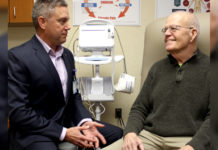Trust is far more than a feel-good emotion—it is a cognitive shortcut deeply embedded in human decision-making. Under uncertainty, trust functions as a mental heuristic that allows us to act swiftly without exhaustive analysis. Whether choosing a familiar morning coffee or selecting a healthcare provider, trust reduces the cognitive load by substituting deliberation with automatic confidence. This efficiency is essential in a world saturated with choices, where mental effort must be conserved for critical decisions.
Psychology of Trust: Reducing Mental Effort in Routine Decisions
Trust simplifies complex environments by replacing risk assessment with intuitive confidence. Our brains rely on past reliable experiences to predict future outcomes, enabling instant choices. For example, picking a well-known café over an unfamiliar one—despite identical reviews—demonstrates the brain’s preference for known patterns. This automatic trust mechanism conserves energy, allowing focus on novel challenges. Research in behavioral psychology shows such shortcuts are not errors but evolutionary adaptations that enhance survival by minimizing exposure to unknown risks.
Neuroscientific Foundations of Trust Formation
When trust is validated—such as confirming a brand’s reliability—dopamine is released in the brain’s reward system, reinforcing the behavior and strengthening subconscious confidence. Mirror neurons also play a role, interpreting social cues and perceived intent to foster connection. Crucially, the amygdala processes familiarity versus risk, triggering instinctive trust when danger signals are low. This neural interplay explains why consistency in appearance, language, and actions is vital: repeated trustworthy signals build a stable neural expectation of reliability.
Trust as a Behavioral Filter in Uncertain Environments
In fast-paced or ambiguous situations—like choosing a healthcare provider—trust accelerates decision-making by overriding slower, rational analysis. Cognitive biases such as the familiarity heuristic further entrench preferences for known options, reducing hesitation. However, past experiences shape current trust thresholds: repeated exposure to consistent, honest interactions builds credibility over time. A small, repeated trustworthy action—like a reliable delivery service—can create a lasting foundation for confidence in broader choices.
Trust in Uncertain Environments: Biases and Consistency
In uncertain settings, the brain favors known over unknown through cognitive shortcuts. Consistency across communication, appearance, and behavior reinforces perceived reliability—customers remember brands that deliver predictably. Over time, tiny, trustworthy acts accumulate, forming a credible reputation. This principle is visible in digital interactions too: secure payment icons on shopping sites act as modern trust signals, reassuring users through visual consistency rooted in evolutionary safety mechanisms.
| Key Elements of Trust Formation | Reliability | Consistency | Predictability |
|---|---|---|---|
| Cognitive Shortcut | Automatic evaluation | Neural reward response |
Case Study: Trust in Daily Choices
Consider the morning coffee ritual: choosing a beloved café over a newer alternative—despite identical online reviews—reveals trust shaped by repeated positive experiences. Similarly, selecting a healthcare provider based on trusted peer feedback underscores how social validation builds confidence. Online shoppers rely on secure payment icons and consistent branding, turning digital cues into modern trust anchors. These examples illustrate how cognitive shortcuts, neural rewards, and behavioral consistency converge to guide everyday trust.
“Trust is not a single act but a pattern of predictable, reliable behavior woven through time.”
Enhancing Trust Through Transparency and Predictability
Clear communication cuts ambiguity, strengthening trust by aligning expectations with outcomes. Accountability—admitting and correcting mistakes—reinforces perceived reliability. Practical strategies include consistent branding, timely updates, and transparent pricing. In digital spaces, a stable user interface and secure logins act as silent trust signals, echoing ancient social cues that once ensured group cohesion.
The Evolutionary and Social Roots of Trust
Evolutionarily, trusting in-group members enhanced survival by fostering cooperation and shared resources. Today, cultural norms still shape trust—some societies emphasize direct relationships, others rely on institutional credibility. The interplay of biology, environment, and learning reveals trust as both instinct and skill. This deep foundation explains why trust remains a universal human driver, adapting across time and technology.
Understanding trust through psychology, neuroscience, and real-world behavior offers a powerful lens for navigating daily life. By recognizing how automatic systems and conscious patterns shape our choices, we become better decision-makers—grounded in evidence, mindful of bias, and empowered by consistency.
Explore how digital logic powers modern gaming experiences—a modern parallel to the ancient cognitive mechanisms that guide trust across all domains.















